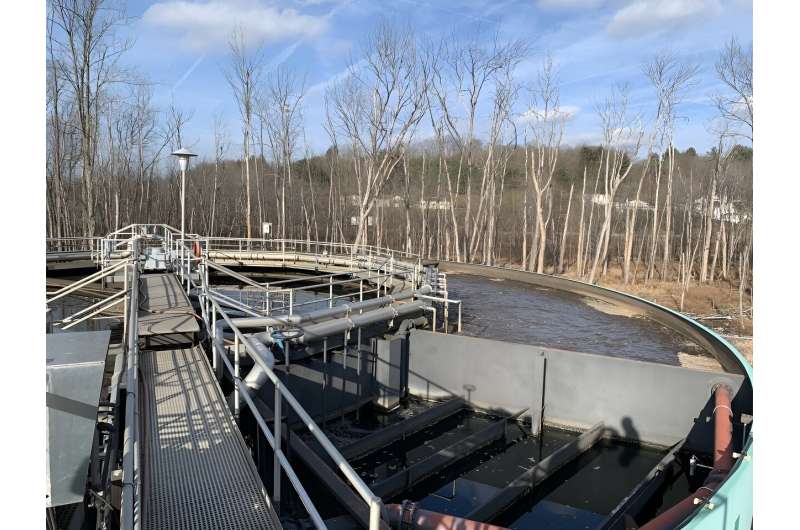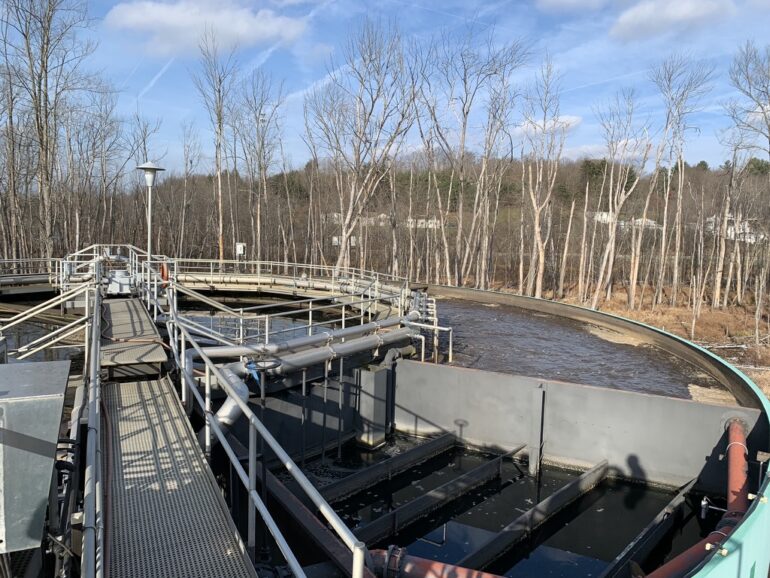First used in the 1940s to monitor for polio, wastewater surveillance proved such a powerful disease monitoring tool that the U.S. Centers for Disease Control and Prevention (CDC) established the National Wastewater Surveillance System to support SARS-CoV-2 monitoring in September of 2020. Now, a team of scientists from Penn State and the Pennsylvania Department of Health have shown that domestic sewage monitoring is useful for a foodborne pathogen as well.
In findings published Sept. 19 in the Journal of Clinical Microbiology, the researchers report that the bacteria Salmonella enterica was detected in samples from two wastewater treatment plants in central Pennsylvania during June 2022.
“Non-typhoidal Salmonella is a common cause of gastroenteritis worldwide, but current surveillance for the disease is suboptimal, so in this research we evaluated the utility of wastewater monitoring to enhance surveillance for this foodborne pathogen,” said Nkuchia M’ikanatha, lead epidemiologist, Pennsylvania Department of Health and an affiliated researcher in Penn State’s Department of Food Science, in the College of Agricultural Sciences.
“In this study, we explored wastewater monitoring as a tool to enhance surveillance for this foodborne pathogen. Wastewater testing can detect traces of infectious diseases circulating in a community, even in asymptomatic individuals, offering an early warning system for potential outbreaks.”
While health care providers are required to report salmonellosis cases, many go undetected. Salmonella bacteria, inhabiting the intestines of animals and humans, are shed in feces. The CDC estimates Salmonella causes roughly 1.35 million infections, 26,500 hospitalizations and 420 deaths annually in the U.S., primarily through contaminated food.
In June 2022, the researchers tested raw sewage samples collected twice a week from two treatment plants in central Pennsylvania for non-typhoidal Salmonella and characterized isolates using whole genome sequencing. They recovered 43 Salmonella isolates from wastewater samples, differentiated by genomic analysis into seven serovars, which are groupings of microorganisms based on similarities. Eight of the isolates, or nearly 20%, were from a rare type of Salmonella called Baildon.

The researchers tested raw sewage samples collected twice a week from two treatment plants in central Pennsylvania for non-typhoidal Salmonella and characterized isolates using whole genome sequencing. They recovered 43 Salmonella isolates from wastewater samples. © Ed Dudley.
The researchers assessed genetic relatedness and epidemiologic links between non-typhoidal Salmonella isolates from wastewater and similar bacteria from patients with salmonellosis. The Salmonella Baildon serovars isolated from wastewater were genetically indistinguishable from a similar bacteria found in a patient associated with a salmonellosis outbreak in the same period in the area.
Salmonella Baildon from wastewater and 42 outbreak-related isolates in the national outbreak detection database had the same genetic makeup. One of the 42 outbreak-related isolates was obtained from a patient residing in the wastewater study sample collection catchment area, which serves approximately 17,000 people.
Salmonella Baildon is a rare serovar—reported in less than 1% of cases nationally over five years, noted M’ikanatha, the study’s first author. He pointed out that this research demonstrates the value of monitoring sewage from a defined population to supplement traditional surveillance methods for evidence of Salmonella infections and to determine the extent of outbreaks.
“Using whole genome sequencing, we showed that isolates of variant Salmonella Baildon clustered with those from an outbreak that occurred in a similar time frame,” he said.
“Case reports were primarily from Pennsylvania, and one individual lived within the treatment plant catchment area. This study provides support for using domestic sewage surveillance in assisting public health agencies to identify communities impacted by infectious diseases.”
Ed Dudley, a professor of food science and the senior author on the study, said these findings highlight the potential of wastewater monitoring as an early warning system for foodborne disease outbreaks, potentially even before physicians and laboratories report cases. This proactive approach could enable health officials to swiftly trace the source of contaminated food, ultimately reducing the number of people affected, suggested Dudley, who also directs Penn State’s E. coli Reference Center.
“While it may not happen overnight, I foresee a future where many, if not most, domestic wastewater treatment plants contribute untreated sewage samples for monitoring evidence of various illnesses,” he said. “This would likely involve collaboration among public health agencies, academia and federal entities, much like our pilot study. I see this as yet another crucial lesson from the pandemic.”
More information:
Nkuchia M. M’ikanatha et al, Outbreak-associated Salmonella Baildon found in wastewater demonstrates how sewage monitoring can supplement traditional disease surveillance, Journal of Clinical Microbiology (2024). DOI: 10.1128/jcm.00825-24
Provided by
Pennsylvania State University
Citation:
Wastewater monitoring can detect foodborne illness, researchers find (2024, September 20)



